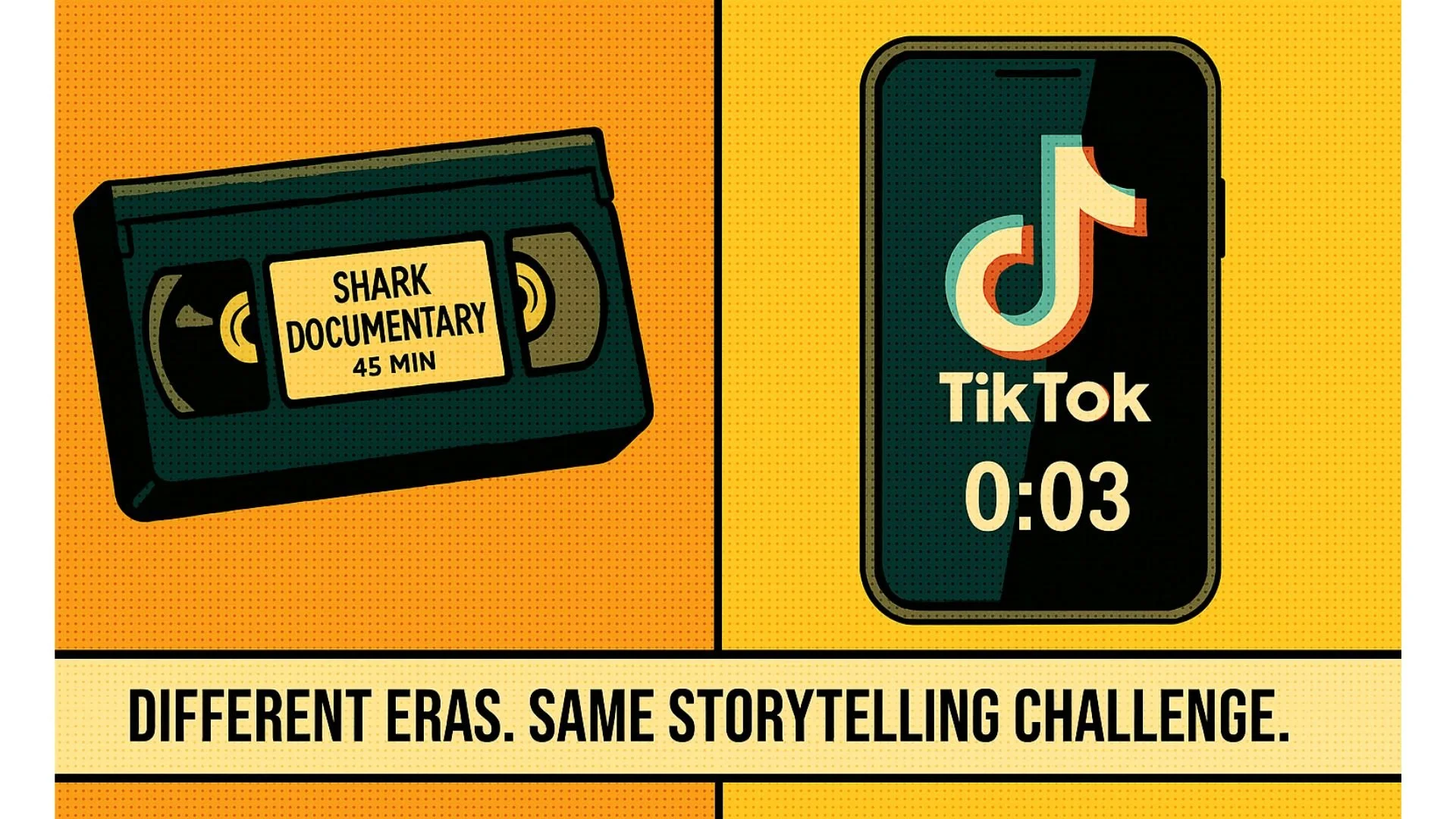From Sharks to TikTok: Storytelling That Hooks Audiences 🦈🎥
Sharks don’t care about your deadline.
On my first wildlife shoot, I spent hours in shark-infested waters, tossing hunks of tuna and waiting for the perfect shot. I wasn’t a thrill-seeker—I was more at home in an edit suite than underwater. But there I was, alongside some of the world's best wildlife filmmakers, chasing something bigger than myself.
After an entire day, multiple dives, and a crew of safety professionals, we walked away with… 45 seconds of usable footage. That was it. And it felt like victory.
That’s long-form content in the wild: patience, persistence, and trust that the story will eventually reveal itself.
The Patience Game
Wildlife filmmaking is the ultimate test of patience. Who can wait longer in silence—a wilderness DP or a Franciscan monk? It’s a toss-up.
Some people thrive in remote places, waiting hours (sometimes days) for the right moment. Me? I can barely sit still long enough for a haircut. I think most TV series could be shorter (looking at you, true crime 👀). For me, time is always ticking.
Enter TikTok and the Short-Attention-Span Dream
Then came TikTok—and it felt like someone had built a platform for my brain. Give me 85 seconds of short-form video content? Done.
But is this good for storytelling techniques? Can you capture the human toll of World War I in a 30-second clip? Or explain the migratory path of whales in a soundbite? Some stories demand depth and nuance.
So the answer is yes… and no.
The Science of Attention
Studies show our attention span is shrinking. Multitasking and nonstop digital consumption push us to juggle constantly. But here’s the twist: that’s not all bad.
According to UC Irvine’s Gloria Mark, our brains actually benefit from resets. That’s why short video content—TikTok, Reels, YouTube Shorts—works so well. It provides the brain with quick wins while maintaining high audience engagement.
Think about it:
A three-second explainer on history
A clip of humpback whales bubble-net feeding 🐋
These aren’t throwaway distractions. They’re micro-stories designed for a digital age.
Why Long-Form Still Matters
Short bursts grab attention. But long-form content sustains it.
Psychologist Mihaly Csikszentmihalyi described “flow” as the optimal state of focus—when you’re so immersed in the story that time disappears. That’s what video storytelling aims for: not just a click, but a deep connection.
Wildlife filmmaking demands patience to build immersion. TikTok requires instant hooks and viral video strategy. Both are valid. Both require creativity. Both are storytelling.
Just like wildlife filmmaking and TikTok, each requires a different rhythm. Telling your own professional story means knowing when to build slowly and when to hook the audience quickly. That’s precisely what I teach in my How to Sell Yourself: Personal Branding with Storytelling course on Udemy: how to transform your career story into a narrative that captures attention instantly, keeps people invested, and leaves them wanting more.
The Takeaway 💡
Christopher Nolan once said:
“If you want to be a filmmaker, make a film and enjoy it; don't be thinking about what's the next thing, the thing after that.”
Whether it takes a week to capture a shark sequence or three seconds to nail a TikTok hook, the principle is the same: create, and then create again.

